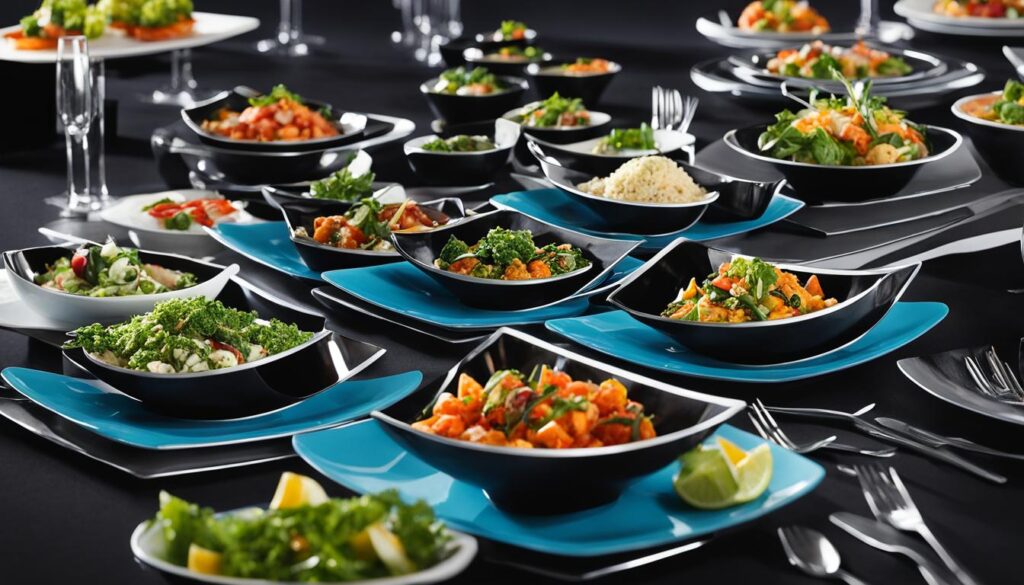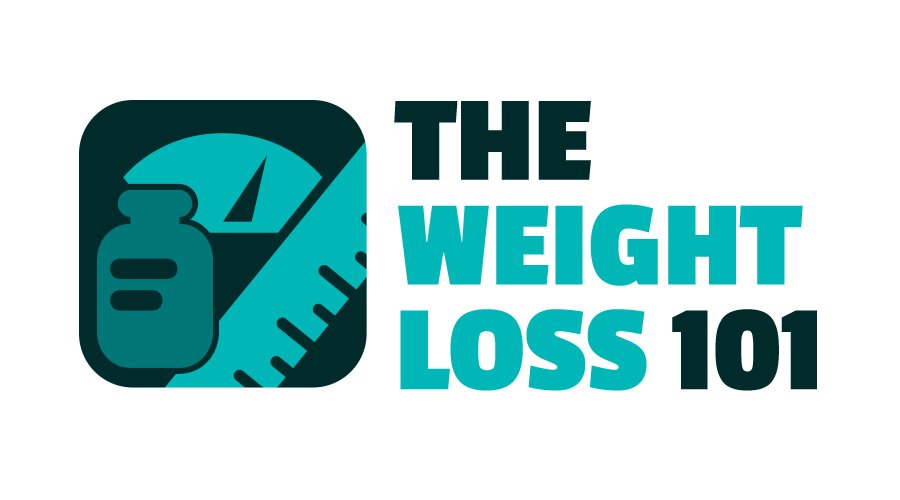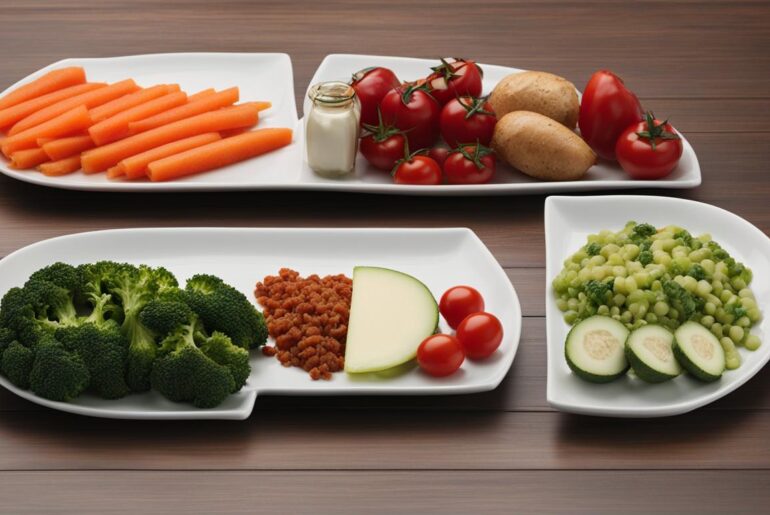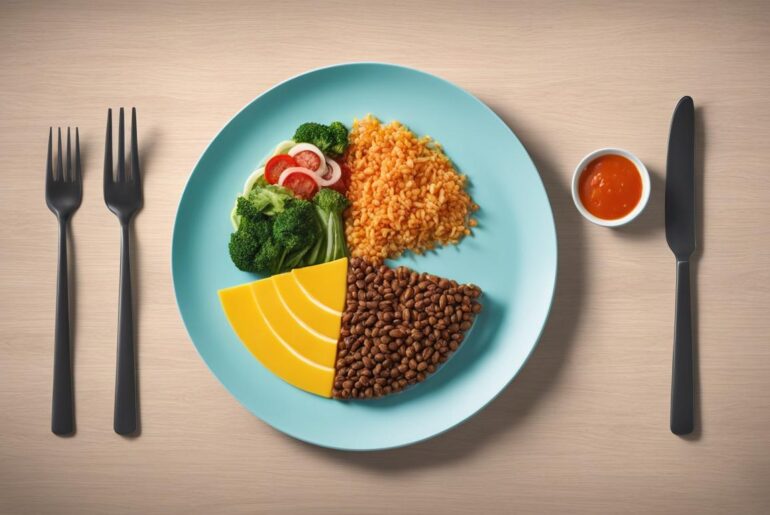As a caterer, ensuring portion control is essential for the success of your establishment. It not only satisfies your customers but also helps you manage costs and maintain consistency in serving sizes. By implementing effective portion control techniques, utilizing the right tools, and following best practices, you can elevate your catering service to new heights.
In this article, I will guide you through the different methods, practices, and strategies that will empower you to master portion control in your catering establishment (check out my post on master portion control here). Whether you are a seasoned caterer or just starting out, these portion control guidelines and tips will benefit your business.
Key Takeaways:
- Implementing portion control ensures customer satisfaction and cost control.
- Utilize portion control tools and techniques to help maintain consistency.
- Consider the type of event, time of day, and guest demographics when determining portion sizes.
- Cater to special dietary needs by adjusting portion sizes for gluten-free, vegetarian, and vegan options.
- Mastering portion control provides various benefits, including brand consistency and marketplace advantage.
Understanding the Importance of Portion Control
Portion control plays a crucial role in weight management, promoting mindful eating, and maintaining a balanced diet. It is essential for individuals looking to regulate their calorie intake and achieve a healthy energy balance. By practicing portion control, we can better understand our body’s hunger and satiety cues, prevent overeating, and foster a sustainable relationship with food.
One of the key benefits of portion control is its impact on weight management (see my post here). By regulating portion sizes, we can ensure that we are consuming the right amount of calories for our bodies. This helps prevent excessive calorie intake and supports weight loss or maintenance goals.
Mindful eating is another aspect that is closely related to portion control. By paying attention to the quantity of food we consume, we become more aware of our eating habits and can make more conscious choices. This cultivates a deeper connection with our bodies’ hunger and satiety signals, allowing us to enjoy food without overindulging.
It is worth noting that our society’s portion sizes have become distorted over time, leading to a normalization of larger servings. This is known as portion distortion. However, by practicing portion control, we can break free from this trend and regain control over our food choices and consumption habits. Portion control empowers us to choose healthier serving sizes and resist the influence of oversized portions.
Practicing portion control empowers us to make conscious choices, maintain a healthy weight, and develop a positive relationship with food.
Overall, understanding the importance of portion control is paramount for individuals seeking to manage their weight and establish healthy eating habits (check out my post on healthy eating habits here). It allows us to align our food intake with our body’s needs, prevent excessive calorie consumption, and promote self-awareness during mealtime.
Benefits of Portion Control:
- Regulates calorie intake
- Supports weight management
- Promotes mindful eating
- Enhances self-awareness of hunger and satiety cues
- Helps break free from portion distortion tendencies
Portion Control Techniques and Strategies

Implementing effective portion control techniques and strategies is crucial for maintaining consistency and managing food portions in catering establishments (see my post here). By employing various methods, caterers can ensure that guests are served appropriate portion sizes, leading to customer satisfaction and cost control.
1. Smaller Plates
Using smaller plates is a simple yet effective way to control portion sizes. By providing guests with smaller plates, the visual perception of a full plate is maintained while reducing the amount of food served. This technique prompts individuals to consume less without feeling deprived.
2. Measuring Food Portions
Measuring food portions using standardized tools, such as kitchen scales or measuring cups, allows caterers to accurately portion out meals and snacks. This technique ensures that each guest receives the recommended serving size, promoting consistency and preventing overeating.
3. Pre-portioning Snacks and Meals
Pre-portioning snacks and meals before serving them to guests is an effective way to control portion sizes. By individually packaging or dividing food into appropriate portion sizes, caterers can prevent guests from taking more than they need. This technique helps minimize food waste and ensures that all guests receive equal servings.
4. Visual Aids
Using visual aids, such as portion size diagrams and sample plates, can help guests understand and visualize appropriate portion sizes. Displaying visual references in prominent areas, such as buffet stations or serving counters, serves as a helpful guide for guests to select appropriate portion sizes.
5. Monitoring the Buffet Line
Monitoring the buffet line is essential for controlling portion sizes in self-service catering events. Assigning staff members to monitor the buffet line and guide guests in selecting appropriate portions can prevent excessive servings. Additionally, ensuring that guests adhere to portion control guidelines helps maintain consistency throughout the event.
6. Controlling the Flow of Food
Controlling the flow of food during catering events is crucial for managing portion sizes (see my post here). By strategically arranging the food stations and adjusting the pace of food replenishment, caterers can effectively control the amount of food available at any given time. This technique helps prevent guests from overloading their plates and promotes portion control.
By implementing these portion control techniques and strategies, caterers can ensure that guests are served appropriate portion sizes, promote customer satisfaction, and prevent excessive food waste. These practices contribute to the overall success and professionalism of catering establishments.
Next, we will explore the factors that caterers need to consider when determining portion sizes for different catering events.
Factors to Consider in Portion Control for Catering Events
When determining portion sizes for catering events, it is important for caterers to consider various factors that can influence the appropriate serving sizes. Factors such as the type of event, time of day, type of food, guest demographics, and budget all play a crucial role in portion control planning.
Firstly, the type of event can significantly impact portion sizes. For buffet-style events, where guests serve themselves, it may be necessary to provide slightly larger portion sizes to ensure everyone is adequately served. On the other hand, plated meals may require more precise portion control to avoid excessive waste.
The time of day also affects portion sizes. For breakfast or brunch events, smaller portions are generally sufficient, while lunch and dinner events may require larger servings. It is important to consider the typical appetite and food consumption patterns during different times of the day.
Next, the type of food being served should be taken into account. Dishes that are inherently more filling, such as those high in fiber or protein, may require smaller portion sizes. Conversely, lighter or less satiating dishes may warrant slightly larger portions to ensure guest satisfaction.
Guest demographics are another crucial factor in portion control planning. Younger guests or those with a more active lifestyle may require larger portions to meet their energy needs. Additionally, dietary restrictions or preferences should be considered to ensure appropriate portion sizes for guests with specific requirements.
Lastly, the budget plays a significant role in portion control planning. Balancing guest satisfaction with cost-effectiveness is essential to ensure profitability. Caterers must find the right balance between providing adequate portions to meet guest expectations and minimizing food waste to control expenses.
Summary:
Considering factors such as the type of event, time of day, type of food, guest demographics, and budget is crucial in determining appropriate portion sizes for catering events. By taking these factors into account, caterers can ensure guest satisfaction, minimize food waste, and optimize cost-effectiveness in their portion control planning.
| Type of Event | Time of Day | Type of Food | Guest Demographics | Budget |
|---|---|---|---|---|
| Wedding reception | Evening | Multi-course meal | Adults | High budget |
| Business conference | Daytime | Buffet with options for dietary restrictions | Professionals of various ages | Medium budget |
| Birthday party | Afternoon | Finger foods and snacks | Children and parents | Low budget |
Portion Control in Special Diets
Caterers play a crucial role in meeting the dietary needs of their guests, including those with special dietary requirements. When it comes to portion control, it’s important to consider the unique considerations of gluten-free, vegetarian, and vegan diets. By offering appropriate portions and mindful meal planning, caterers can ensure that all guests are accommodated.
Gluten-Free Portion Control
For individuals who follow a gluten-free diet, it’s essential to provide them with suitable options and mindful portion sizes. Gluten-free guests may not be able to consume certain grains, such as wheat, barley, and rye, which contain gluten. Instead, caterers can incorporate naturally gluten-free ingredients like rice, quinoa, and potatoes into their menus. When it comes to portion control, adjusting the sizes of bread or pasta made from gluten-free alternatives is crucial. This ensures that gluten-free guests receive the right amount of food without compromising their dietary needs.
Vegetarian Portion Control
When catering to vegetarian guests, it’s important to offer protein-rich options and balanced meal portions. Vegetarians rely on plant-based protein sources, such as legumes, tofu, and tempeh, to meet their nutritional needs. Caterers can provide appropriately sized portions of protein-rich dishes to ensure that vegetarian guests are satisfied and receive adequate nutrition. Additionally, serving a variety of vegetables, grains, and dairy alternatives can create a well-rounded vegetarian meal.
Vegan Portion Control
Vegans follow a plant-based diet that excludes all animal products, including meat, dairy, eggs, and honey. To cater to vegan guests, it’s crucial to provide plant-based protein sources and portion sizes that account for higher calorie counts. Foods like beans, lentils, quinoa, and tofu can provide the necessary protein for a vegan diet. Caterers should ensure that vegan guests receive appropriately sized portions of these plant-based protein options, along with a variety of vegetables, fruits, grains, and dairy alternatives.
By considering the specific needs of gluten-free, vegetarian, and vegan diets, caterers can implement portion control practices that cater to all dietary requirements. Addressing portion sizes and offering diverse menu options allows special diet guests to enjoy their meals without compromising their health or preferences.
| Diet Type | Considerations |
|---|---|
| Gluten-Free | Adjusting portion sizes of gluten-free bread or pasta |
| Vegetarian | Offering protein-rich options and balanced meal portions |
| Vegan | Providing plant-based protein sources and portion sizes accounting for higher calorie counts |
The Benefits of Portion Control in Catering Establishments

Implementing portion control in catering establishments comes with numerous benefits. Let’s explore how portion control can positively impact your catering business and contribute to its overall success.
1. Customer Satisfaction
Portion control ensures customer satisfaction by providing appropriate portion sizes. By serving consistent and properly sized portions, you can meet the expectations of your customers and deliver a memorable dining experience. This not only leaves your guests satisfied and happy but also encourages repeat business and positive reviews.
2. Cost Control
Portion control plays a crucial role in minimizing food waste and optimizing ingredient usage. By accurately measuring and controlling portion sizes, you can effectively manage your food costs and reduce unnecessary expenditures. This allows you to maintain profitability without compromising the quality of your dishes.
3. Brand Consistency
Consistency is key in building a strong brand identity. Portion control helps maintain brand consistency across multiple locations or events. By adhering to standardized portion sizes, you ensure that every dish reflects your brand’s values and delivers a consistent experience to your customers, no matter where they are served.
4. Regulatory Compliance
Portion control is essential for regulatory compliance in the catering industry. It helps you meet health and safety standards by accurately providing nutritional information and following recommended portion guidelines. By doing so, you mitigate the risk of non-compliance and related consequences.
5. Staff Efficiency
Implementing portion control practices enhances staff efficiency in food preparation. With clear portion guidelines and proper training, your staff can work systematically and consistently, reducing waste, and increasing productivity. This allows your team to focus on other aspects of catering, leading to a smoother operation overall.
6. Sustainability
Portion control contributes to sustainability efforts by minimizing food waste and reducing the carbon footprint of your catering business. By serving appropriate portion sizes, you not only reduce the amount of food discarded but also conserve resources involved in food production, transportation, and disposal. This demonstrates your commitment to environmentally conscious practices.
7. Marketplace Advantage
Lastly, portion control gives your catering business a competitive advantage in the marketplace. As customers become more conscious of their health and well-being, offering portion-controlled meals positions your brand as a healthier and more responsible choice. This can attract health-conscious customers, differentiate you from competitors, and ultimately expand your customer base.
By harnessing the benefits of portion control, you can elevate your catering business to new heights. From customer satisfaction to cost control, brand consistency to marketplace advantage, implementing portion control practices is a strategic decision that can contribute to the long-term success of your catering establishment.
Conclusion
Mastering portion control in catering establishments is crucial for achieving customer satisfaction, controlling costs, and maintaining consistency. By understanding the importance of portion control and incorporating effective techniques and strategies, caterers can elevate their service and excel in the competitive catering industry.
Portion control plays a significant role in enhancing the overall dining experience for customers. By offering appropriate portion sizes, caterers ensure that guests are satisfied and receive the right amount of food. This not only contributes to customer satisfaction but also helps to minimize food waste and optimize ingredient usage, resulting in better cost control.
Additionally, incorporating portion control practices enables caterers to maintain consistency across different events and locations. By following portion control guidelines and considering relevant factors such as the type of event, time of day, type of food, guest demographics, and budget, caterers can provide consistent portion sizes that meet the needs of each specific occasion.
Furthermore, catering to special dietary needs through portion control is essential for accommodating guests with specific preferences or restrictions. By adapting portion sizes and offering suitable options for various diets, including gluten-free, vegetarian, and vegan, caterers can ensure that all guests feel valued and satisfied.
Incorporating portion control as a core practice in catering establishments offers numerous benefits – from increased customer satisfaction and cost control to brand consistency, regulatory compliance, staff efficiency, sustainability, and a competitive advantage in the marketplace. By embracing portion control as an integral part of their operations, caterers can elevate the overall dining experience and achieve excellence in the industry.




